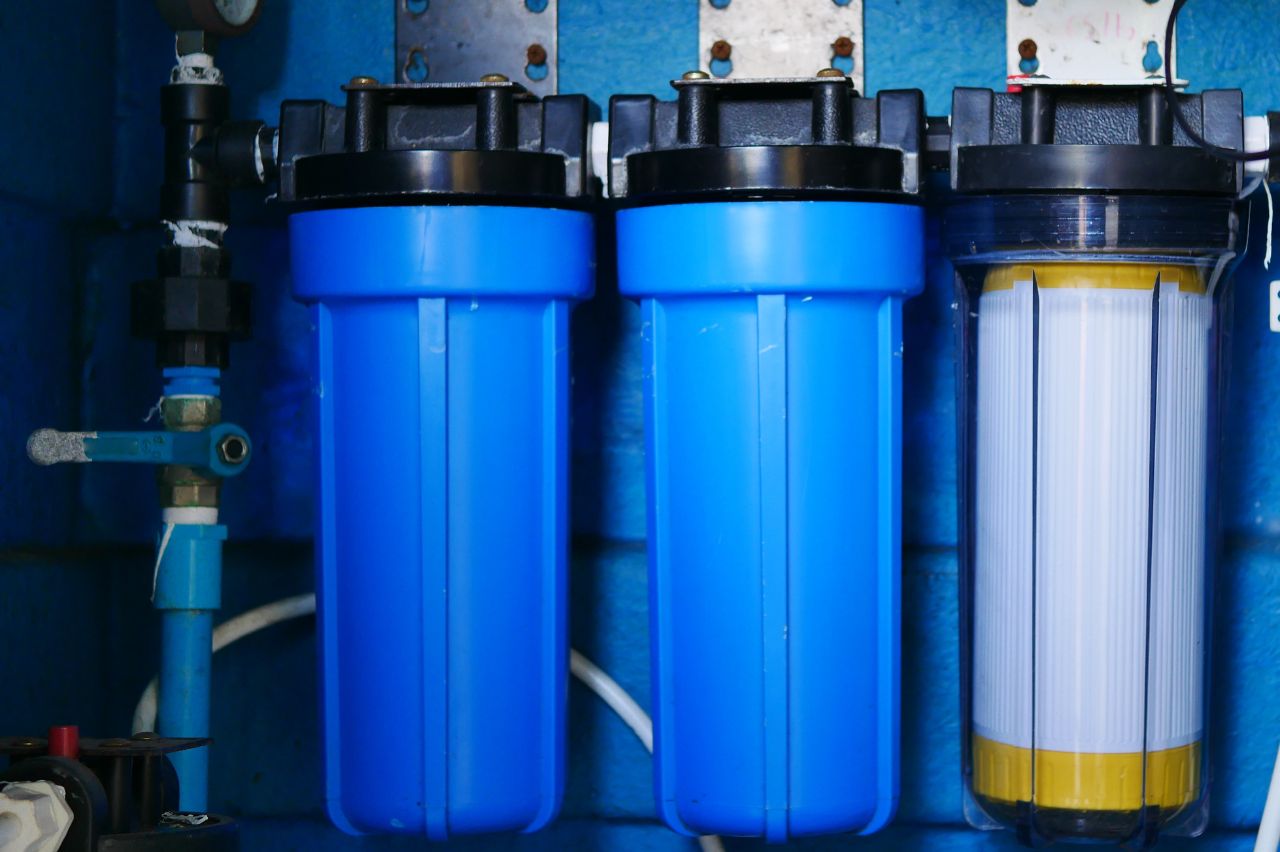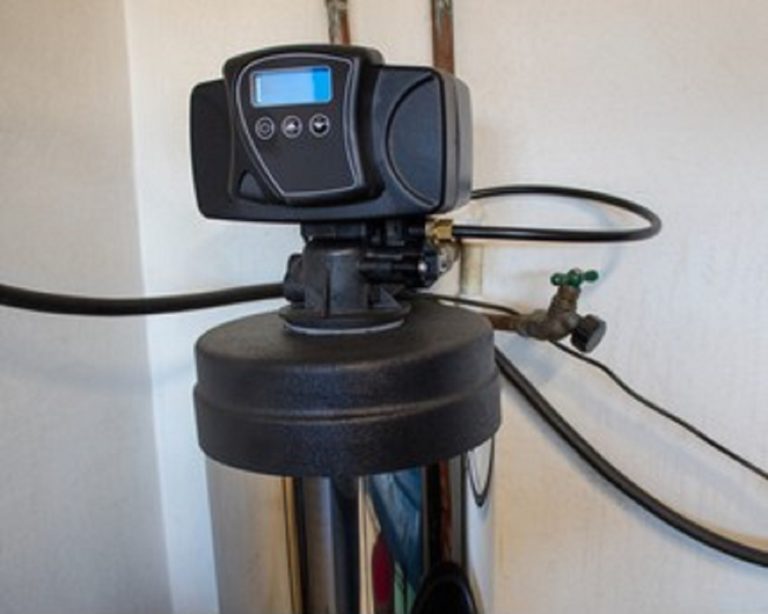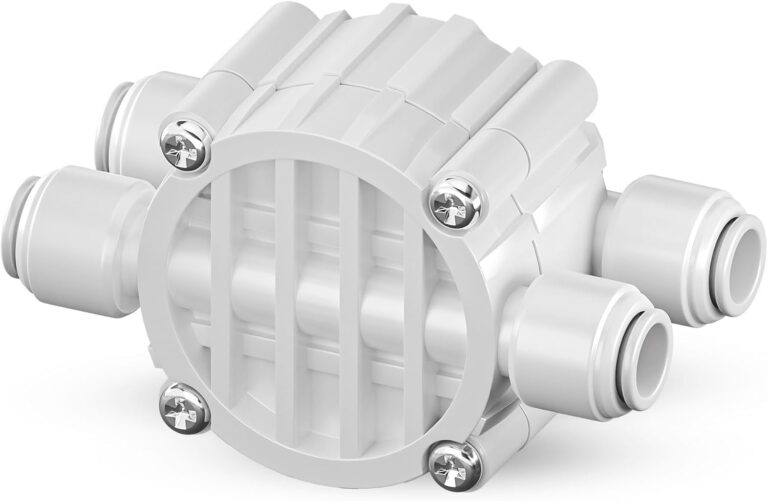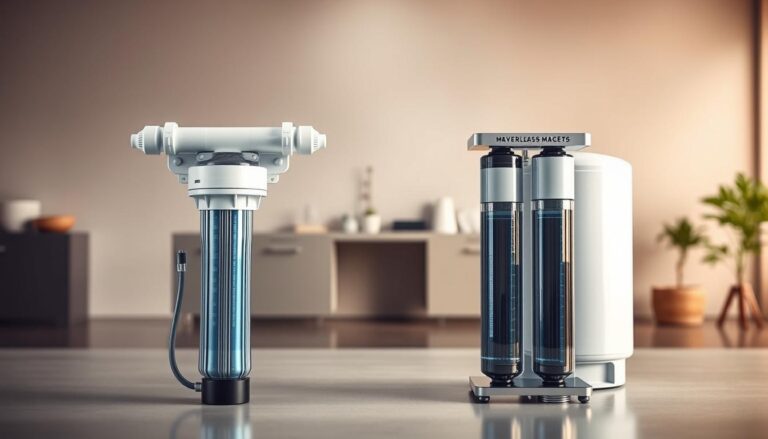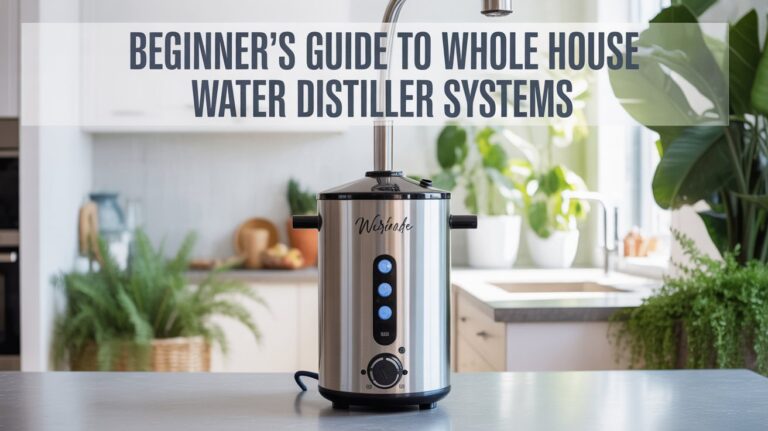Beginner’s Guide to Home Reverse Osmosis Water Systems
Key Takeaways
- Reverse osmosis technology uses a semi-permeable membrane to remove impurities from water, producing clean and safe drinking water.
- The benefits of reverse osmosis water systems include improved taste, odor, and appearance of water, as well as the removal of contaminants such as lead, chlorine, and fluoride.
- When choosing the right reverse osmosis system for your home, consider factors such as water usage, space availability, and the quality of your water source.
- Proper installation and regular maintenance are crucial for the efficient and effective operation of a reverse osmosis system.
- Reverse osmosis systems can significantly improve water quality by removing up to 99% of impurities, providing a healthier and safer drinking water option for your home.
Understanding Reverse Osmosis Technology
Reverse osmosis is a highly effective water purification technology that has gained widespread popularity in recent years. This advanced filtration process utilizes a semi-permeable membrane to remove a wide range of contaminants from water, including dissolved minerals, salts, and even microorganisms. By understanding the underlying principles of reverse osmosis, homeowners can make informed decisions about incorporating this technology into their water treatment systems.
The reverse osmosis process works by applying pressure to the water, forcing it through a specialized membrane that acts as a barrier, trapping impurities and allowing only pure water to pass through. This membrane is designed with microscopic pores that are small enough to block the passage of dissolved salts, heavy metals, and other contaminants, while allowing water molecules to permeate. As the water is forced through the membrane, the contaminants are flushed away, leaving behind clean, purified water.
The semi-permeable membrane is the heart of a reverse osmosis system, and its performance is crucial to the overall effectiveness of the filtration process. These membranes are engineered to have a high rejection rate for a wide range of contaminants, ensuring that the water that emerges from the system is of exceptional quality. In comparison to traditional water filtration methods, such as activated carbon or ion exchange, reverse osmosis stands out as a more comprehensive and efficient solution for removing a diverse array of impurities from water.
The Benefits of Reverse Osmosis Water Systems
Homeowners who invest in a reverse osmosis water system can enjoy a host of benefits that extend beyond just improved water quality. One of the primary advantages is the significant enhancement in the taste and clarity of the water. By removing dissolved minerals, salts, and other contaminants, reverse osmosis systems produce water that is crisp, refreshing, and free from unpleasant odors or flavors.
In addition to the improved taste, reverse osmosis systems offer a remarkable level of contaminant removal. These systems are highly effective at eliminating heavy metals, such as lead and mercury, as well as microorganisms, including bacteria and viruses. This comprehensive filtration process can have a positive impact on the health and well-being of a household, as consuming water free from these harmful substances can reduce the risk of various health issues.
Furthermore, the cost-effectiveness of reverse osmosis systems is a significant advantage for homeowners. While the initial investment may be higher than some traditional filtration methods, the long-term savings can be substantial. By eliminating the need for bottled water or frequent filter replacements, reverse osmosis systems can provide a more economical and sustainable solution for clean, high-quality water in the home.
Choosing the Right Reverse Osmosis System for Your Home
When it comes to selecting the right reverse osmosis system for your home, there are several factors to consider. The first and foremost is the water usage and household size. Reverse osmosis systems come in a range of capacities, from under-sink models designed for individual faucets to whole-house systems that can accommodate the water needs of an entire family. Evaluating your household’s water consumption patterns and the available space in your home will help you determine the appropriate system size.
Another crucial factor to consider is the specific water quality issues in your area. Different reverse osmosis systems may be better suited to address certain contaminants, such as high levels of dissolved minerals or the presence of heavy metals. By understanding the composition of your home’s water supply, you can select a system that is optimized to address your specific water quality concerns.
When comparing different reverse osmosis systems, it’s essential to look at the number of filtration stages, the water production rate, and the overall system capacity. Higher-end models may offer additional filtration stages, such as pre-filters and post-filters, to enhance the water’s purity and taste. Additionally, the water production rate and the system’s overall capacity will determine how well it can meet the water demands of your household.
Lastly, it’s crucial to choose a reputable and reliable reverse osmosis system manufacturer. Investing in a high-quality system from a trusted brand can ensure long-term performance, optimal water quality, and the availability of necessary replacement parts and maintenance support.
Installation and Maintenance Considerations
| Metrics | Data |
|---|---|
| System Capacity | 50-100 gallons per day |
| Filter Lifespan | 6-12 months |
| Water Waste Ratio | 3:1 |
| Removal Efficiency | 95-99% |
| Installation | DIY or professional |
Installing a reverse osmosis system in your home requires some basic plumbing and electrical work, but with the right guidance, it can be a straightforward process. The first step is to identify the appropriate location for the system, which is typically under the sink or in a basement or utility room. Once the location is determined, the necessary plumbing and electrical connections can be made to integrate the system with your home’s water supply and power source.
It’s important to follow the manufacturer’s instructions carefully during the installation process to ensure the system is set up correctly and to avoid any potential leaks or other issues. In some cases, professional installation may be recommended, especially for whole-house reverse osmosis systems or more complex setups.
Ongoing maintenance is crucial for the long-term performance and efficiency of a reverse osmosis system. This includes regular filter replacements, which can vary in frequency depending on the system and the water quality in your area. Additionally, the system may require periodic cleaning or flushing to prevent membrane fouling or scaling, which can reduce the system’s effectiveness over time.
By staying on top of the recommended maintenance schedule and following the manufacturer’s guidelines, homeowners can ensure their reverse osmosis system continues to provide high-quality, purified water for years to come. Regular maintenance not only helps to maintain optimal performance but also extends the lifespan of the system, ultimately leading to greater cost-effectiveness and peace of mind.
Improving Water Quality with Reverse Osmosis
One of the primary benefits of a reverse osmosis system is its ability to significantly reduce a wide range of contaminants in the water supply. These systems are highly effective at removing dissolved minerals, salts, and even heavy metals, such as lead and fluoride, which can be harmful to human health.
By removing these impurities, reverse osmosis systems can have a positive impact on the overall water quality in the home. The resulting water is often described as having a crisp, clean taste, free from the unpleasant flavors or odors that can be associated with untreated water. This improved water quality can enhance the taste of beverages, such as coffee and tea, as well as improve the performance of household appliances that rely on water, such as washing machines and dishwashers.
However, it’s important to note that the removal of dissolved minerals through the reverse osmosis process can also impact the water’s hardness. In some cases, this may necessitate the use of additional water softening or remineralization systems to restore the appropriate mineral balance and prevent issues like scale buildup in plumbing or appliances.
When using reverse osmosis water for cooking, drinking, and other household purposes, it’s essential to consider the potential impact on the water’s mineral content. While the removal of contaminants is a significant benefit, some individuals may prefer to maintain a certain level of beneficial minerals in their drinking water. In such cases, supplementing the reverse osmosis water with a remineralization system or selectively reintroducing certain minerals can help to address this concern.
Addressing Common Reverse Osmosis System Issues
As with any water filtration system, reverse osmosis systems can occasionally encounter various issues that may affect their performance or efficiency. One common problem is low water pressure or flow rate, which can be caused by a variety of factors, such as a clogged pre-filter, a malfunctioning booster pump, or a fouled reverse osmosis membrane.
Another potential issue is membrane fouling or scaling, which can occur when minerals, organic matter, or other contaminants build up on the surface of the membrane. This can reduce the system’s ability to effectively filter the water, leading to decreased water production and decreased water quality. Addressing this issue may require regular cleaning or replacement of the membrane.
Water waste and brine disposal can also be a concern with reverse osmosis systems, as the filtration process generates a stream of concentrated waste water that must be properly disposed of. Homeowners may need to explore strategies to minimize water waste, such as using the waste water for non-potable purposes or implementing water recovery systems.
By being proactive in addressing these common issues and following the manufacturer’s recommendations for maintenance and troubleshooting, homeowners can ensure their reverse osmosis system continues to operate at peak efficiency, providing a reliable source of high-quality, purified water for their household.
Comparing Reverse Osmosis to Other Water Filtration Methods
When it comes to water filtration, reverse osmosis is not the only option available to homeowners. Other technologies, such as activated carbon filters, ion exchange systems, and ultraviolet (UV) disinfection, also offer their own unique benefits and drawbacks. Understanding the advantages and disadvantages of each method can help homeowners make an informed decision about the most appropriate water filtration solution for their needs.
Reverse osmosis stands out for its comprehensive contaminant removal capabilities, effectively removing a wide range of impurities, including dissolved minerals, salts, and even microorganisms. This makes it a highly effective solution for improving water quality and addressing a variety of water quality concerns. However, reverse osmosis systems can be more expensive to install and operate, and they may generate a higher volume of waste water compared to some other filtration methods.
In contrast, activated carbon filters are generally more affordable and can effectively remove chlorine, organic compounds, and some heavy metals from water. However, they are less effective at removing dissolved minerals and salts. Ion exchange systems, on the other hand, are well-suited for addressing water hardness by exchanging calcium and magnesium ions for sodium ions, but they do not remove a wide range of other contaminants.
Ultimately, the choice of water filtration method will depend on the specific water quality issues in a household, the desired level of contaminant removal, the available budget, and personal preferences. In some cases, a combination of filtration technologies, such as reverse osmosis paired with a carbon filter or a water softener, may provide the most comprehensive and effective water treatment solution.
Maximizing the Efficiency of Your Reverse Osmosis System
To ensure the long-term efficiency and performance of a reverse osmosis system, it’s essential to optimize its water usage and minimize waste. One effective strategy is to implement water-saving features, such as automatic shut-off valves or flow restrictors, which can help reduce the amount of waste water generated during the filtration process.
Additionally, proper maintenance and care of the reverse osmosis membrane can significantly extend its lifespan and maintain optimal filtration performance. This includes regular cleaning, replacement of pre-filters and post-filters, and monitoring the system’s water production rate and pressure. By following the manufacturer’s recommended maintenance schedule, homeowners can ensure their reverse osmosis system continues to deliver high-quality, purified water for years to come.
To further enhance the efficiency of a reverse osmosis system, homeowners may consider integrating it with other water treatment technologies, such as water softeners or remineralization systems. This can help address specific water quality issues, such as hard water or the removal of beneficial minerals, while maintaining the overall effectiveness of the reverse osmosis filtration process.
By adopting energy-efficient practices, such as using the system during off-peak hours or optimizing the water pressure, homeowners can also achieve cost savings on their energy bills. Additionally, proper insulation and maintenance of the reverse osmosis system components can contribute to its energy-efficient operation, ultimately leading to long-term cost savings and a more sustainable water treatment solution.
Frequently Asked Questions about Reverse Osmosis Water Systems
As homeowners explore the benefits of reverse osmosis water systems, they often have a range of questions and concerns that need to be addressed. One of the most common questions relates to the installation and maintenance of these systems, including the necessary plumbing and electrical work, as well as the frequency of filter replacements and system cleaning.
Another area of concern for many homeowners is the impact of reverse osmosis on the water’s taste, hardness, and mineral content. While reverse osmosis effectively removes a wide range of contaminants, it can also strip the water of beneficial minerals, leading to a perceived lack of taste or the need for additional water softening or remineralization.
Homeowners may also have questions about the environmental impact of reverse osmosis systems, particularly regarding the disposal of the waste water or brine generated during the filtration process. Understanding the sustainability and eco-friendly aspects of these systems can help alleviate any concerns and ensure that the chosen solution aligns with the homeowner’s values and priorities.
Finally, guidance on selecting the right reverse osmosis system for specific water quality and household needs is crucial. Factors such as water usage, available space, and the presence of specific contaminants can all play a role in determining the most suitable system for a particular home. By addressing these frequently asked questions, homeowners can make informed decisions and confidently invest in a reverse osmosis water system that meets their needs and provides long-term benefits.

